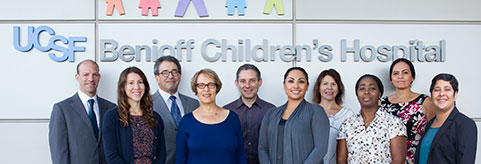Cleft Lip and Palate
A cleft lip is a birth defect in which the upper lip fails to form properly during early fetal development. This causes a gap, or cleft, on one or both sides of the upper lip, respectively called unilateral or bilateral clefts. It may occur alone or together with a cleft palate. It's also possible for children to have a cleft palate only with a normal lip.
Clefts of the lip and palate are the most common birth defect affecting the face, found in about one out of every 600 newborns. No one knows exactly why clefts occur, but some families may have a predisposition to them: If one parent or a child in a family has a cleft, the chance of a subsequent child being born with a cleft increases from the usual one in 600 to about one in 20. Having a child with a cleft doesn't mean that either parent did anything wrong during the pregnancy.
Surgery is needed to repair a cleft lip, and because the condition can cause dental problems, most children also need orthodontic treatment.
A cleft lip is noted at birth by the presence of a notch or gap on either one or both sides of the upper lip. A cleft that extends into the gum is described as cleft lip and alveolus.
A cleft lip is diagnosed by physical examination at birth, although high resolution prenatal ultrasound may reveal the presence of a cleft lip in the womb.
Cleft lip is repaired surgically, with the surgery taking place when the baby is around 10 weeks of age or weighs 10 pounds. Before surgery, we will prepare the lip with either taping or orthopedic molding also called nasoalveolar molding (NAM).
The procedure takes two to three hours and the baby usually stays in the hospital for one night. If needed, a revision of the lip surgery will be done before the child begins school.
Most children with cleft lip also need orthodontic treatment. Significant speech difficulties are unlikely.
Children with cleft lip may encounter social and emotional challenges unique to this condition. Support organizations and resources are available for children with clefts and their families.
Because some cases of this birth defect may have a genetic link, families may be referred to the General Genetics Clinic for counseling.
Other Resources
- AboutFace
- California Children's Services
- California Dept. of Developmental Services: Regional Center Directory
- Changing Faces
- Children's Craniofacial Association
- Cleft Advocate
- Cleft Palate Foundation
- FACES: The National Craniofacial Association
- Family Voices
- Parents Helping Parents
- Support for Families of Children with Disabilities
- Woodbine House Special Needs Books
Reviewed by health care specialists at UCSF Benioff Children's Hospital.


